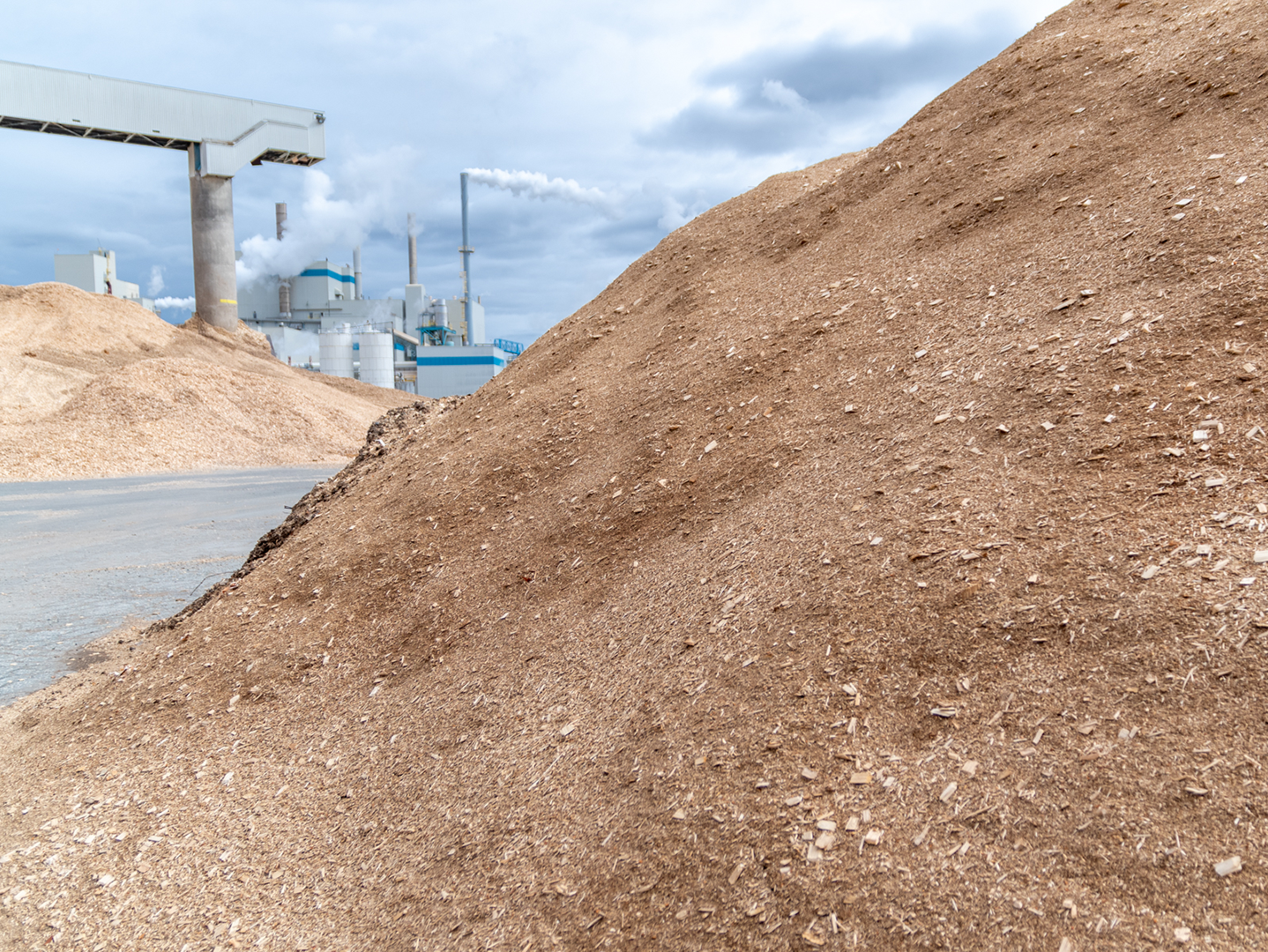Trees and wood fiber are more than just the renewable natural resources from which we make our everyday products. They serve as an important source of renewable energy.
In 2020, 73 percent of the energy for our pulp and paper mills came from renewable sources. This is better than the industry average of about 65 percent, according to the American Forest and Paper Association. Our mills also generated the equivalent of 71 percent of their electricity needs, reducing their dependence on the grid.
This renewable energy comes from biomass — byproducts from our manufacturing process, such as black liquor, bark and wood residues. Unlike coal or other fossil fuels, energy captured from biomass results in net zero emissions of carbon dioxide into the atmosphere over the long term.
Biomass (wood, wood waste and biofuels) is the United States’ largest source of domestic renewable energy, supplying more energy than wind and solar combined.
Not only do we use that energy to power our mills, but also we provide renewable energy credits to help other companies meet their own internal sustainability goals. In many cases, these companies pass on the benefits to customers who are demanding products that are manufactured using renewable energy.
Similarly, we sell renewable energy credits into government-mandated programs in states such as Maryland, Pennsylvania and Ohio.
“The volume we are able to supply in these markets helps make those credits more affordable,” says Steve Thomas, who manages Domtar’s energy program. “In the cases where state programs mandate a certain percentage of renewable energy, rate payers save when more sustainable energy is available.”
This renewable energy is used to power tens of thousands of homes and businesses while lowering the cost of electric supply for these ratepayers.
Sustainable Forestry Makes Biomass Carbon Neutral
We offset carbon emissions from biomass combustion by actively growing forest landscapes that continually absorb carbon dioxide from the atmosphere.
The basic cycle of growth, combustion/decomposition and regrowth makes biomass fuels carbon neutral over the long term. Forest biomass absorbs carbon dioxide from the air as it grows. When biomass is burned to generate heat and power, the carbon dioxide that was absorbed during the growth cycle is released for the next generation of forests. What drives this cycle is the forest products industry’s commitment to sustainability.
Because of the ongoing efforts of Domtar and others in our sector, there are more forested acres in the United States today than during most of the 20th century. Forest volume has expanded thanks to sustainable forest management and a strong industry commitment to growing and maintaining healthy forests, sustainably harvesting to make renewable forest products and bioenergy, and replanting to renew the cycle.
An important distinction is that Domtar only generates energy from wood-based byproducts. These residuals come from our own pulp- and paper-making processes. We also use the biomass leftovers from lumber mills and thinning operations.
This is preferable to landfilling, composting or open decomposing of these materials because it eliminates sources of greenhouse gases, such as methane, that are much more harmful than carbon dioxide. It also is far more preferable to chipping whole trees for use as biomass fuels and simply burning up the highest quality fiber as fuel before it has a chance to serve society as a long-use product such as paper or building materials.
Capturing renewable energy from our manufacturing byproducts lets us make make the most efficient use of harvested trees by using every part of the tree.
In western Canada, for example, where forests had been damaged by fires a few years ago, our Kamloops Mill, in partnership with the Forest Enhancement Society of British Columbia, was able to put wood waste from slash piles to more productive use as biofuel.
Biomass: A Key Source of Renewable Energy
Energy from biomass is an important part of the renewable energy mix as the world looks for alternatives to fossil fuels, Thomas says.
“Unlike wind or solar, biomass-based energy generation is available during all hours of the day or night,” he says. “Having a diverse renewable generation portfolio that includes biomass, along with wind and solar, is the most efficient and cost-effective way to meet renewable electricity needs.”
